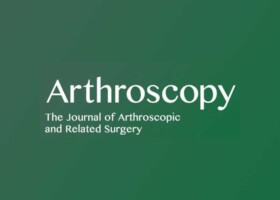
Authors:
Maximilian Petri, Ryan J Warth, Marilee P Horan, Joshua A Greenspoon, Peter J Millett
Abstract:
The surgical management of rotator cuff tears has been successful in reducing symptoms and improving shoulder function in the most affected patients. However, there are several surgical factors that have been found to negatively affect patient outcomes. These include large tear size, poor tendon quality, increased degree of tendon retraction, and the presence of fatty degeneration, among many other factors. Therefore, patients with massive, retracted rotator cuff tears are less likely to achieve an optimal outcome using standard rotator cuff repair constructs, particularly in a revision situation. As a result, new methods of tendon repair have been developed to improve outcomes in this subgroup of patients. Specifically, rotator cuff augmentation using biological patches has been proposed as a method to improve repair integrity, particularly when tendon quality is less than optimal.
Patch augmentation can be performed using open, mini-open, or arthroscopic techniques. A variety of biological patch materials have been used with favorable results, including autologous fascia lata, human acellular dermis, and porcine dermal collagen in addition to various synthetic grafts composed of poly-L-lactic acid, polyester, polypropylene, polytetra-fluoroethylene, or polyurethane. Some studies, however, have not reported good results with biological patches.
Although the most appropriate materials for the augmentation of rotator cuff repairs has not yet been defined, preliminary biomechanical and clinical evidence suggest that rotator cuff augmentation may be a safe and effective method for the treatment of massive, retracted rotator cuff tears. However, limited data exist regarding minimum 2-year clinical outcomes after rotator cuff augmentation using acellular dermal matrix allografts in this group of patients. In addition, the treatment of rota- tor cuff tendon deficiency in the setting of otherwise healthy rotator cuff muscles has not been well studied. Finally, data regarding the use of biological patch augmentation in revision rotator cuff repair are currently lacking. The purpose of this study was to assess minimum 2-year clinical outcomes after open revision biologic patch augmentation in patients with massive rotator cuff retears who had deficient rotator cuff tendons with healthy rotator cuff muscles. We hypothesized that revision rotator cuff repair with biologic patch augmentation using human acellular dermal allograft would be safe, effective, and would result in significant improvement in clinical outcomes scores when compared with preoperative baselines in patients with massive rotator cuff tears.
For the complete study: Outcomes After Open Revision Repair of Massive Rotator Cuff Tears With Biologic Patch Augmentation
